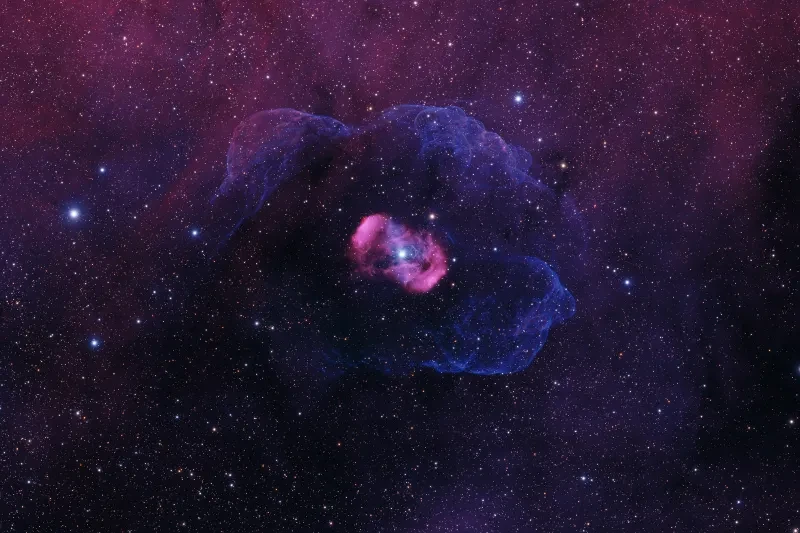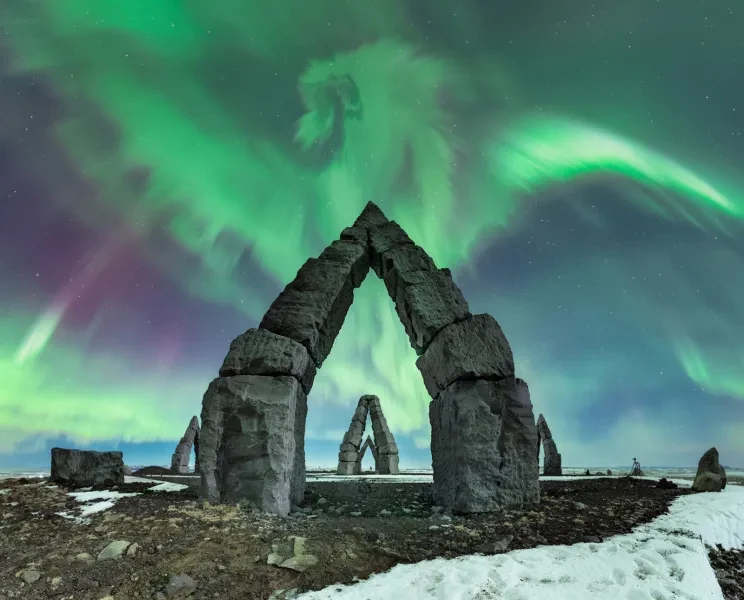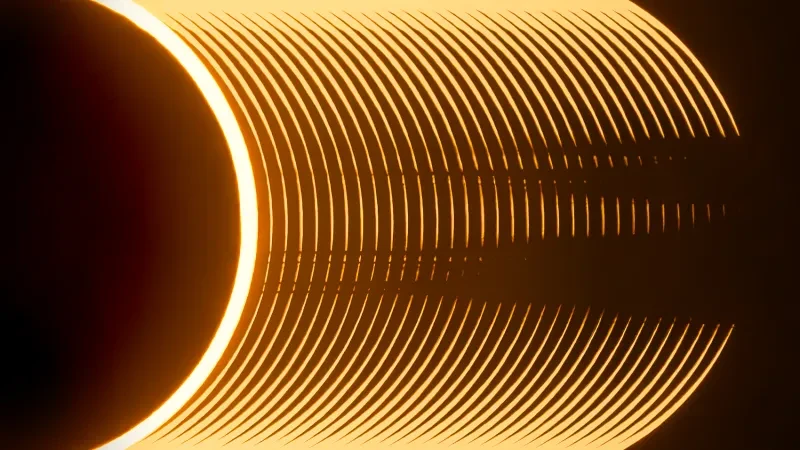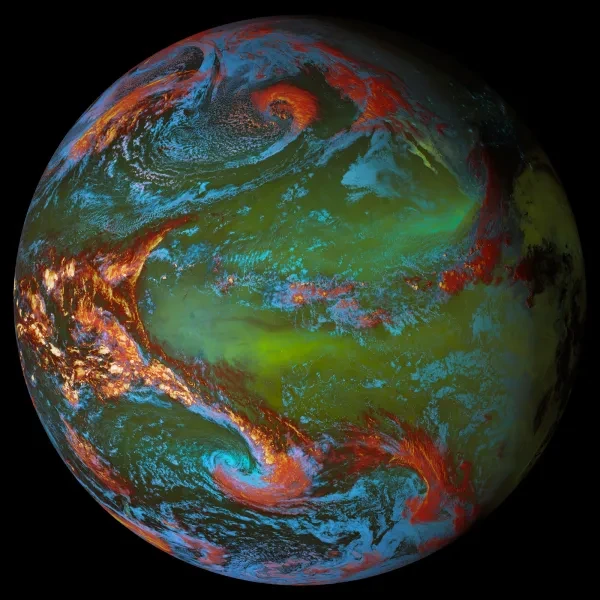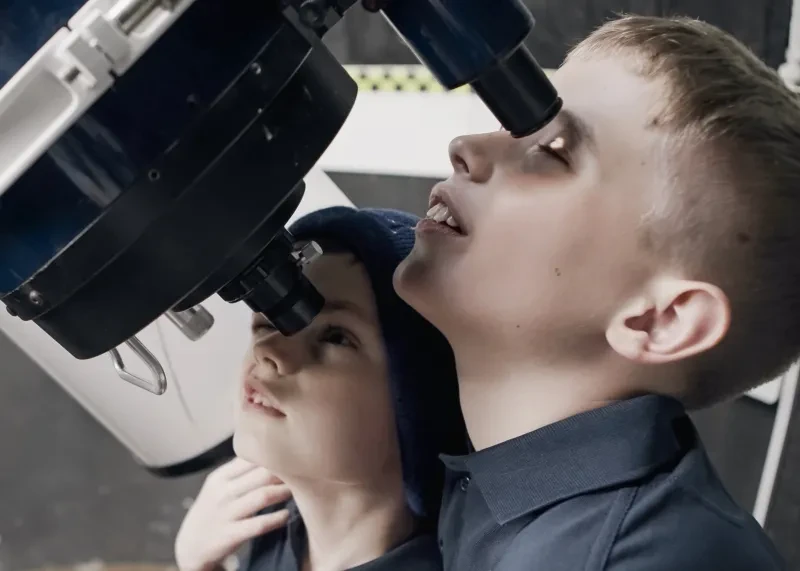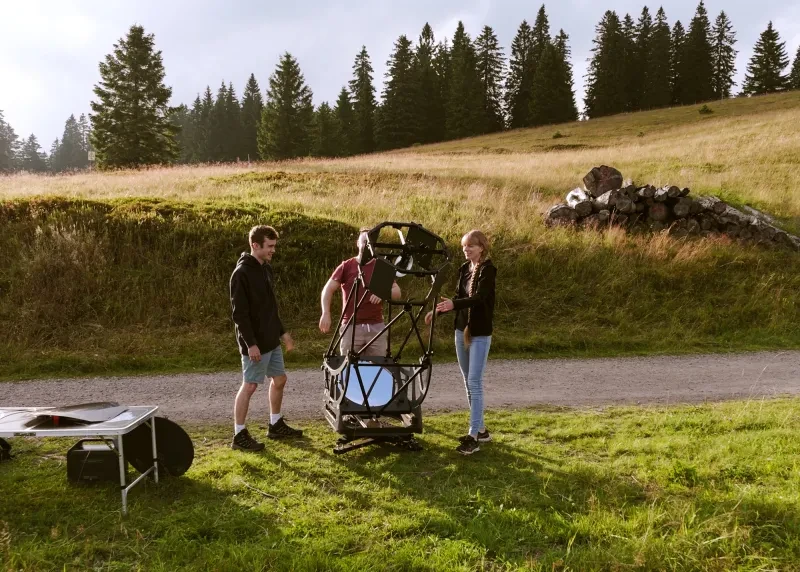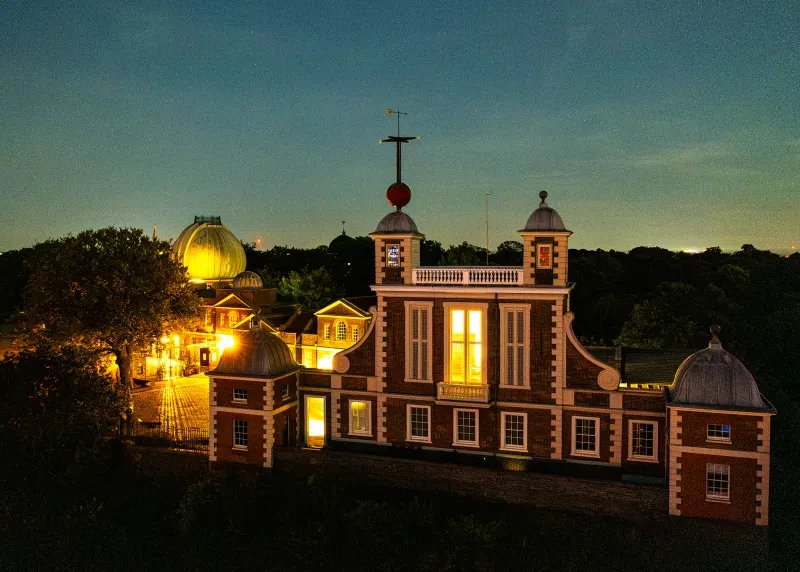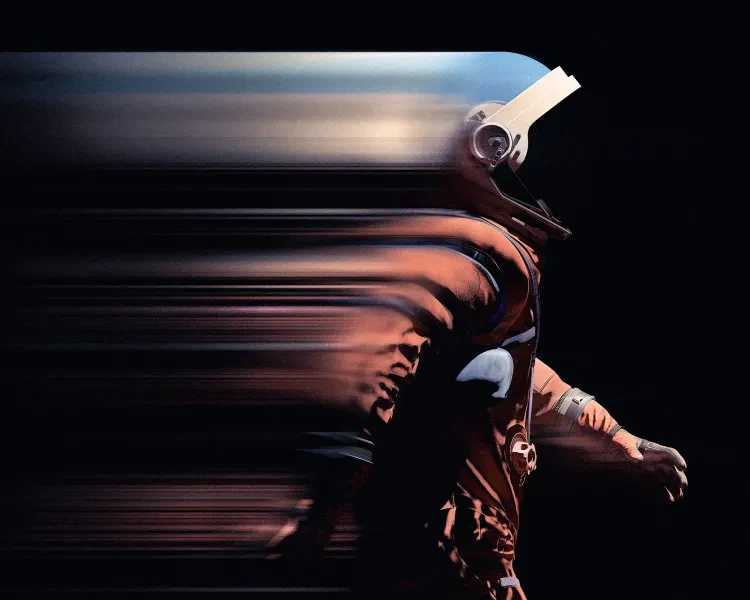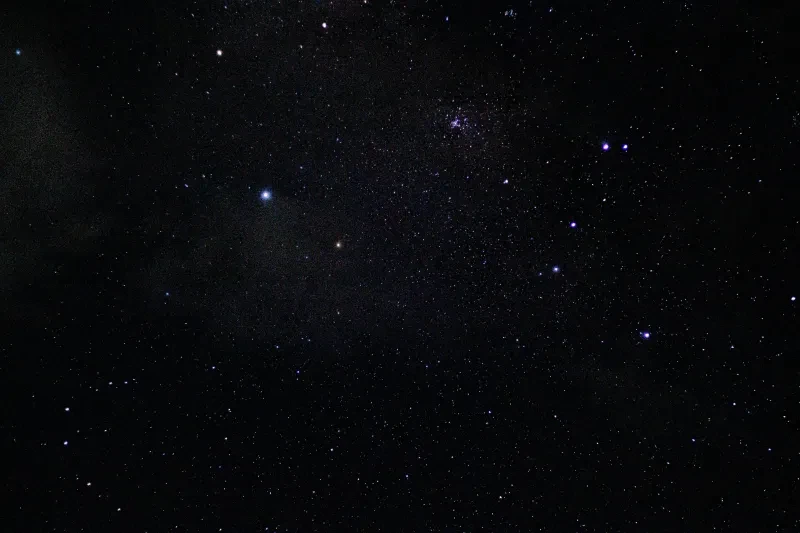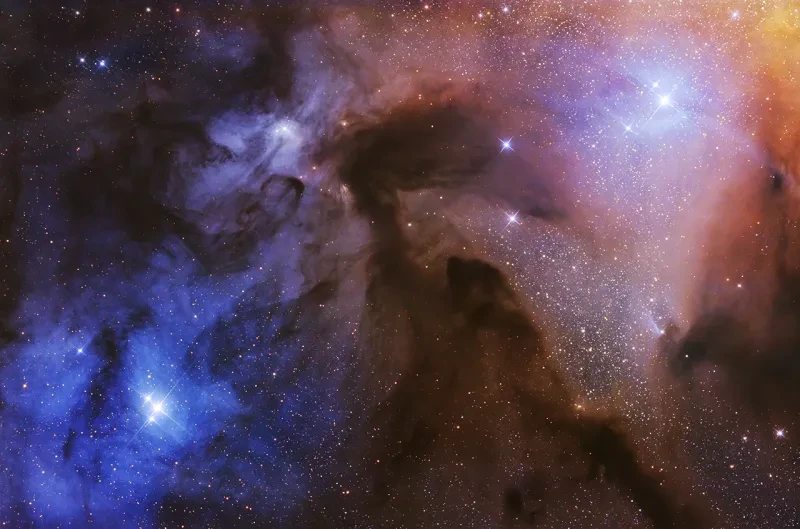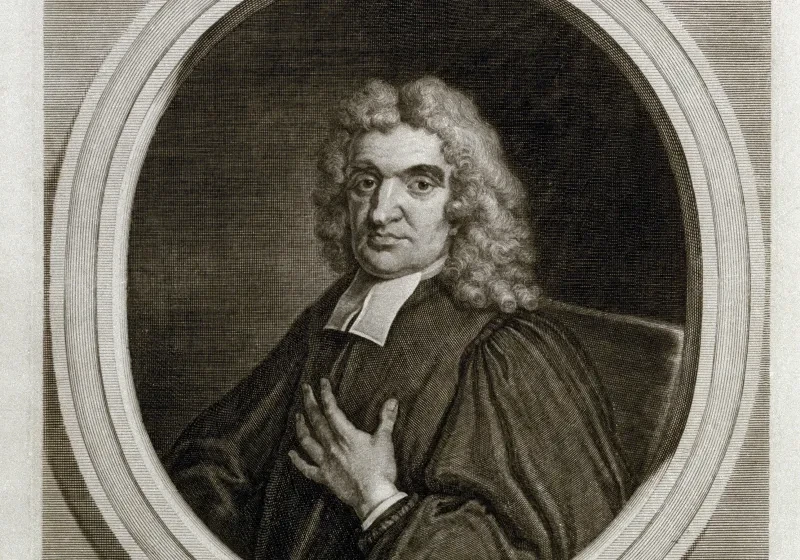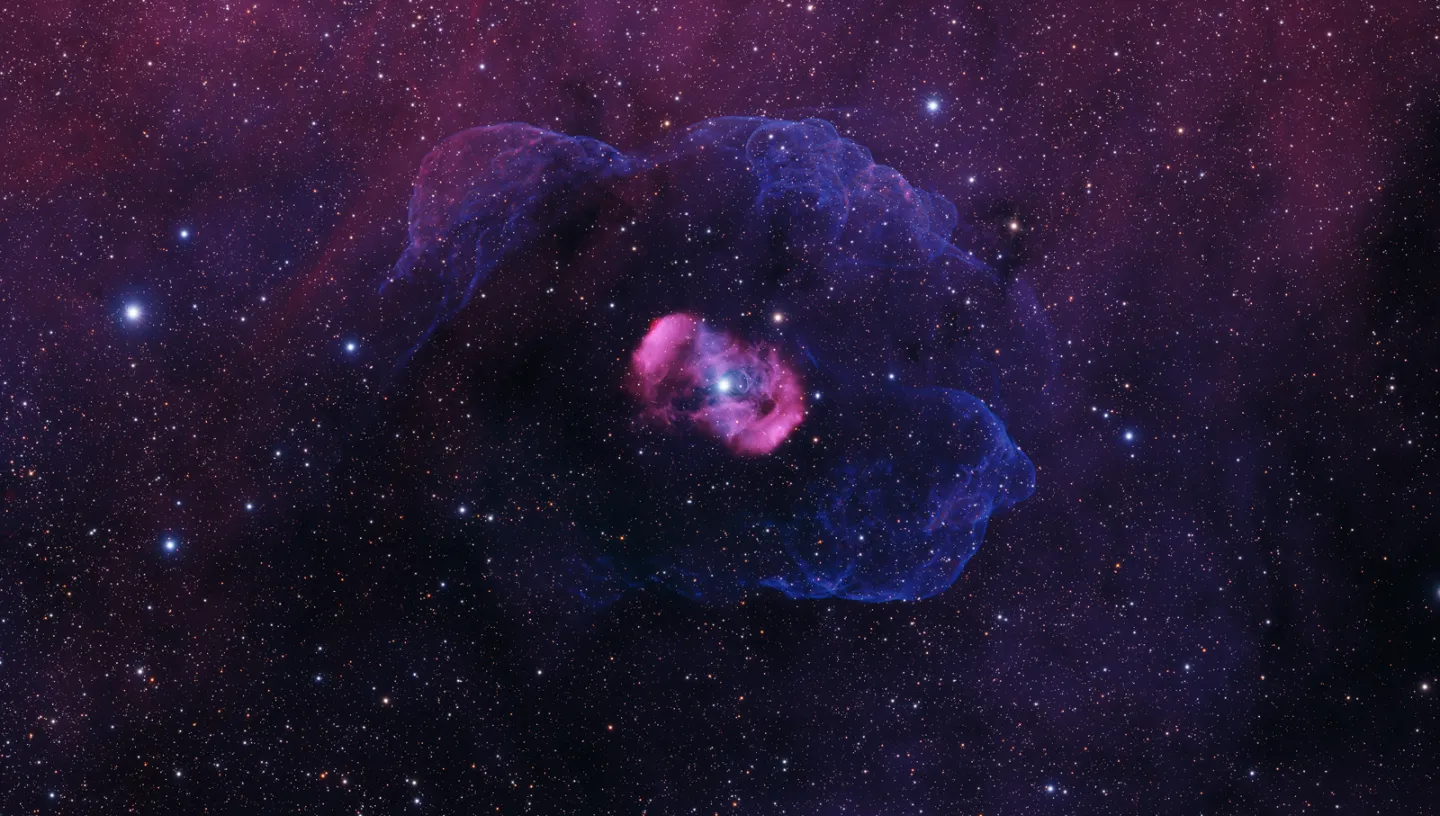
Explore the breathtaking winning images and the full shortlist for ZWO Astronomy Photographer of the Year 2025.
The shortlist for the ZWO Astronomy Photographer of the Year 2025 competition has been unveiled.
From a blood moon hanging over Shanghai to a family portrait of the Solar System and a close-up of a comet's streaming tails, distant astronomical wonders are photographed in magnificent detail for all to admire.
Now in its 17th year, in 2025 the competition received a record number of entries, with just over 5,880 photographs submitted from 68 different countries.
See a small selection of shortlisted images below, and stay tuned to discover this year's full shortlist, winners and runners-up at a special online awards ceremony on 11 September.
Keep up to date
Sign up to our space newsletter for exclusive astronomy news, guides and events, and be among the first to see this year's Astronomy Photographer of the Year winners
See the shortlist
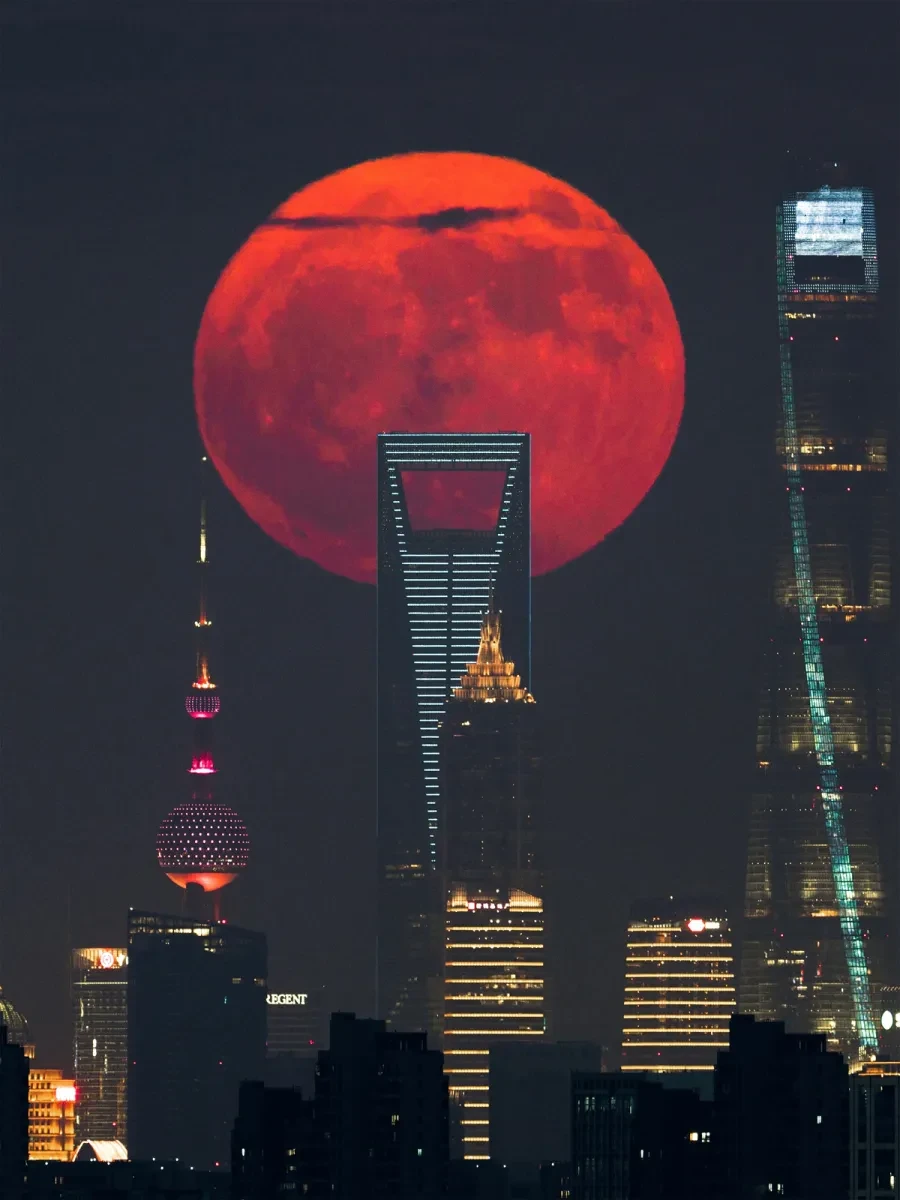
Blood Moon Rising Behind the City Skyscrapers by Tianyao Yang
Jiading District, Shanghai, China
This photograph captures a red Full Moon rising beside Shanghai’s tallest skyscrapers in Lujiazui. Taken from a distance of 26.5 km (16.5 miles) from the skyscrapers in a single exposure, this image’s alignment took five years of planning. The Full Moon appears perfectly positioned next to the illuminated skyline, creating a striking contrast.
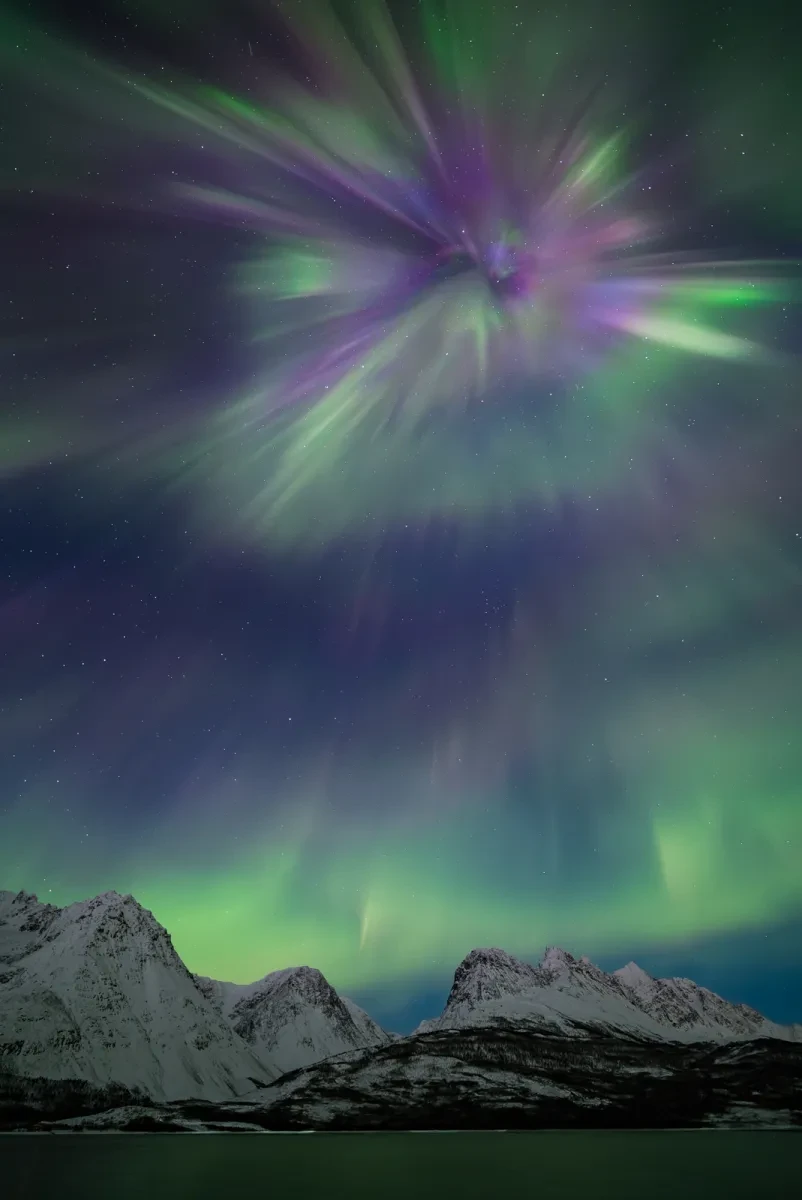
The Arctic Flower by Vincent Beudez
Sjursnes, Tromsø, Norway
In April, there is no ‘true’ night in northern Norway. This is why the Northern Lights look much more blue than usual. Vincent Beudez captured the visually pleasing aurora shape above the Norwegian background.
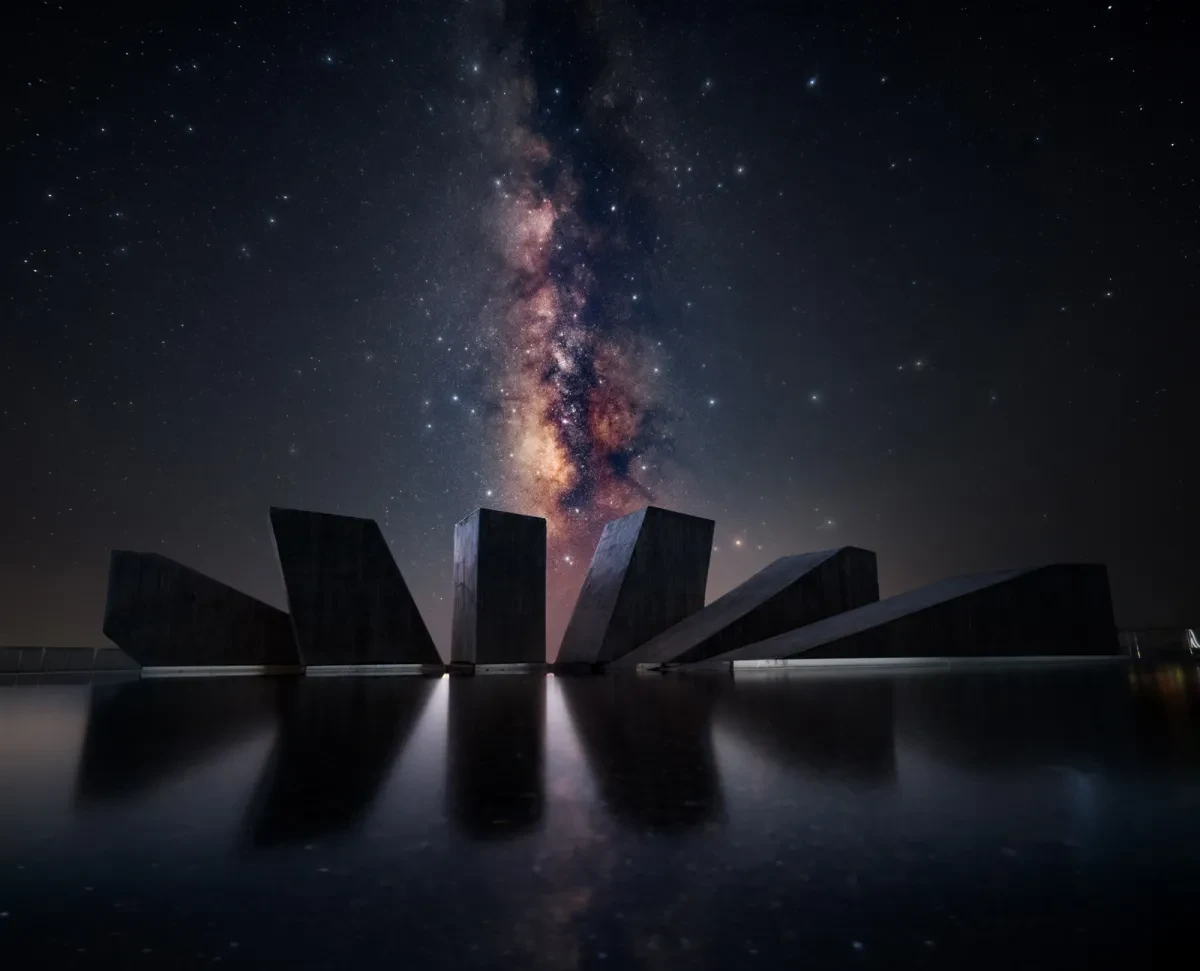
Gateway to the Galaxy by Yujie Zhang
Songyang County, China
Under the night sky, several black geometric buildings appear to stand on the water’s surface, resembling gateways to the galaxy. The bright Milky Way stretches across the sky behind them, with stars twinkling. The reflections of the buildings shimmer in the water, blending reality and illusion, as if opening a passage to the mysteries of the Universe, inspiring endless reverie and a longing to explore the vast starry sky.
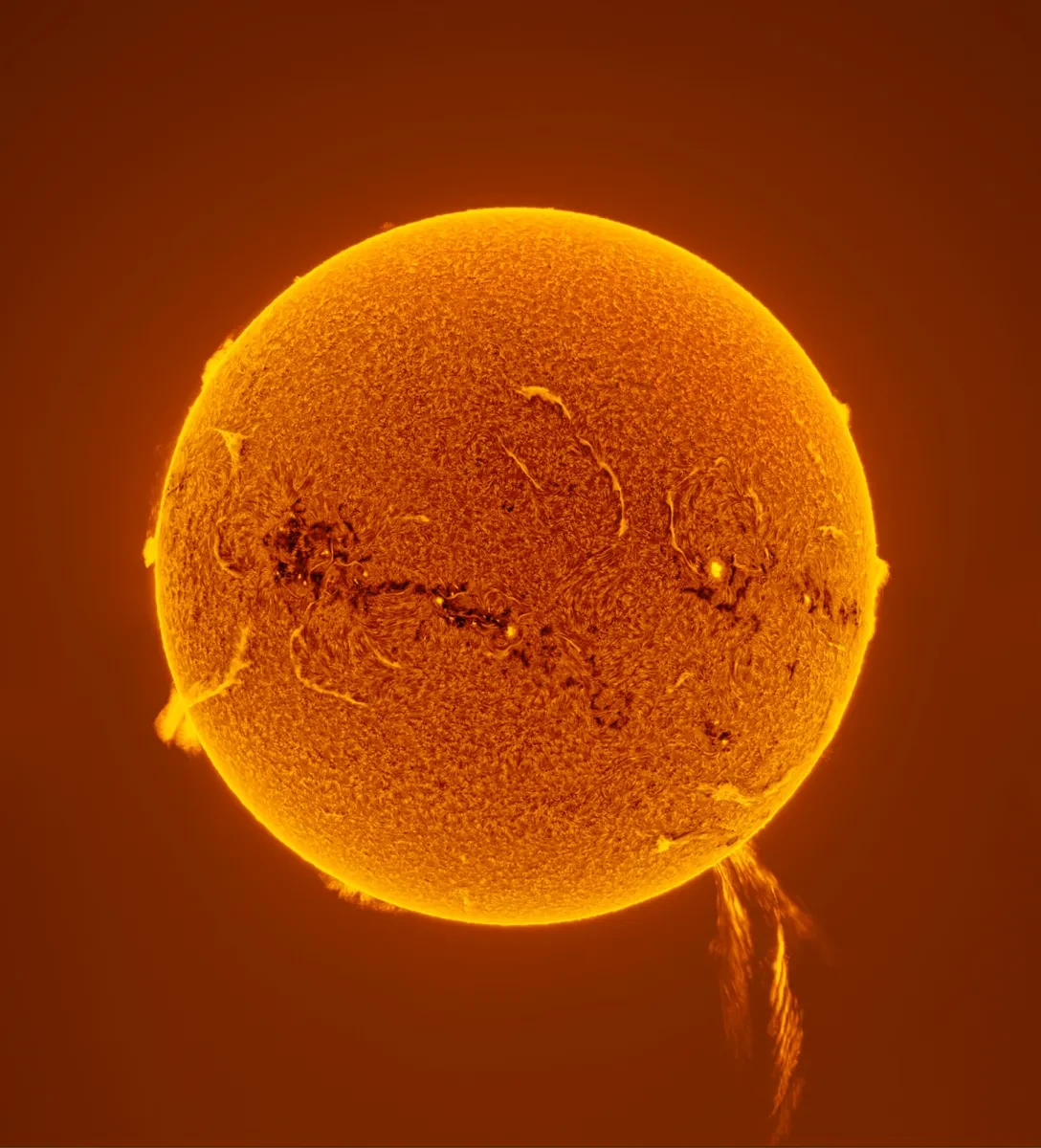
500,000-km Solar Prominence Eruption by PengFei Chou
Eastern New District, Xinxing County, Guangdong province
On 7 November 2024, the Sun experienced a massive solar prominence eruption, with a length exceeding 500,000 km (311,000 miles). The eruption lasted approximately one hour from its initial outburst to its conclusion. The eruption phase of the prominence is composed of more than 20 stacked data sets highlighting the entire process of this spectacular event.
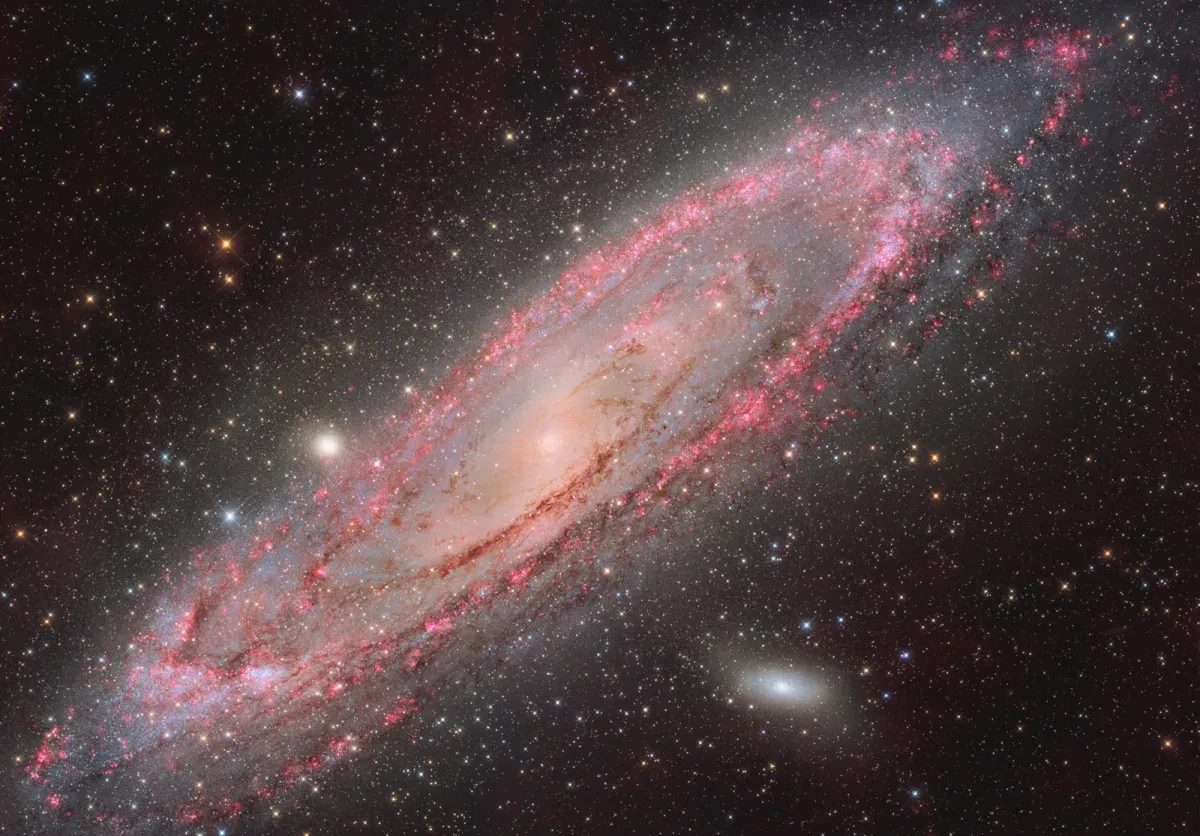
Eight-Panel Mosaic of M31: Stars, Nebulae and Central Bulge by Chuhong Yu, Jingyao Hong, Xi Zhu, Yaguang Wan
Daocheng County, Garzê Tibetan Autonomous Prefecture, Sichuan, China
This image shows countless resolved stars, emission nebula and a mysterious central bulge. The photo is incredibly detailed, the mist surrounding the galaxy is actually tens of thousands of yellowish tiny stars.
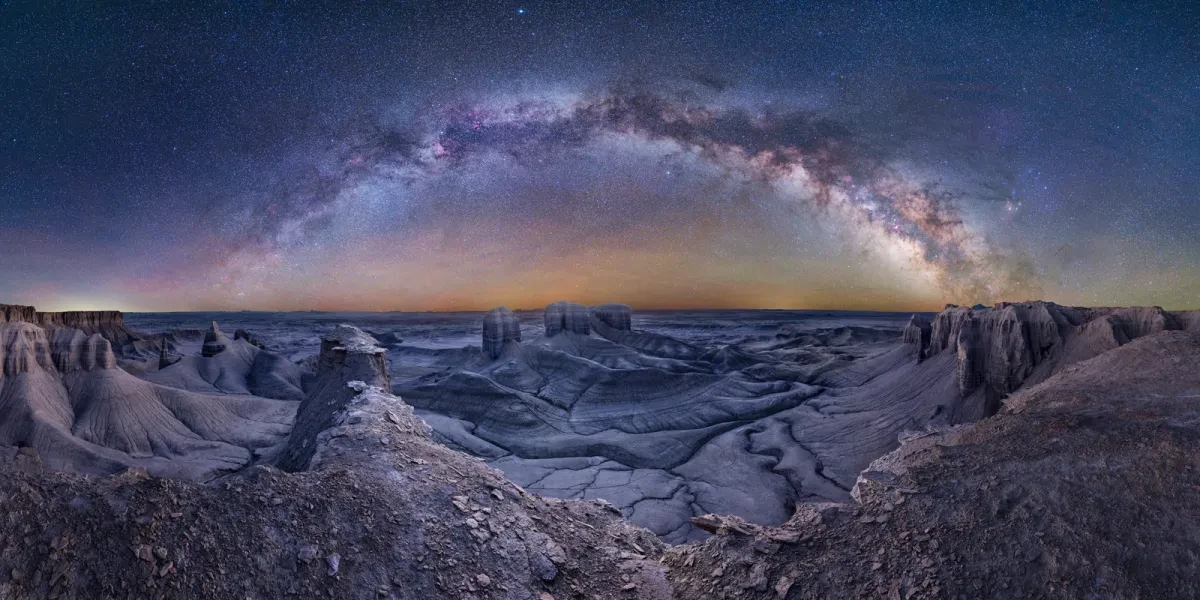
Into the Past by Jim Hildreth
Moonscape Overlook, Wayne County, Utah, USA
This impressive panorama is a view from the Utah desert. 23,000 pixels wide, the photograph shows the desolate, character rich landscape, below a starry Milky Way.
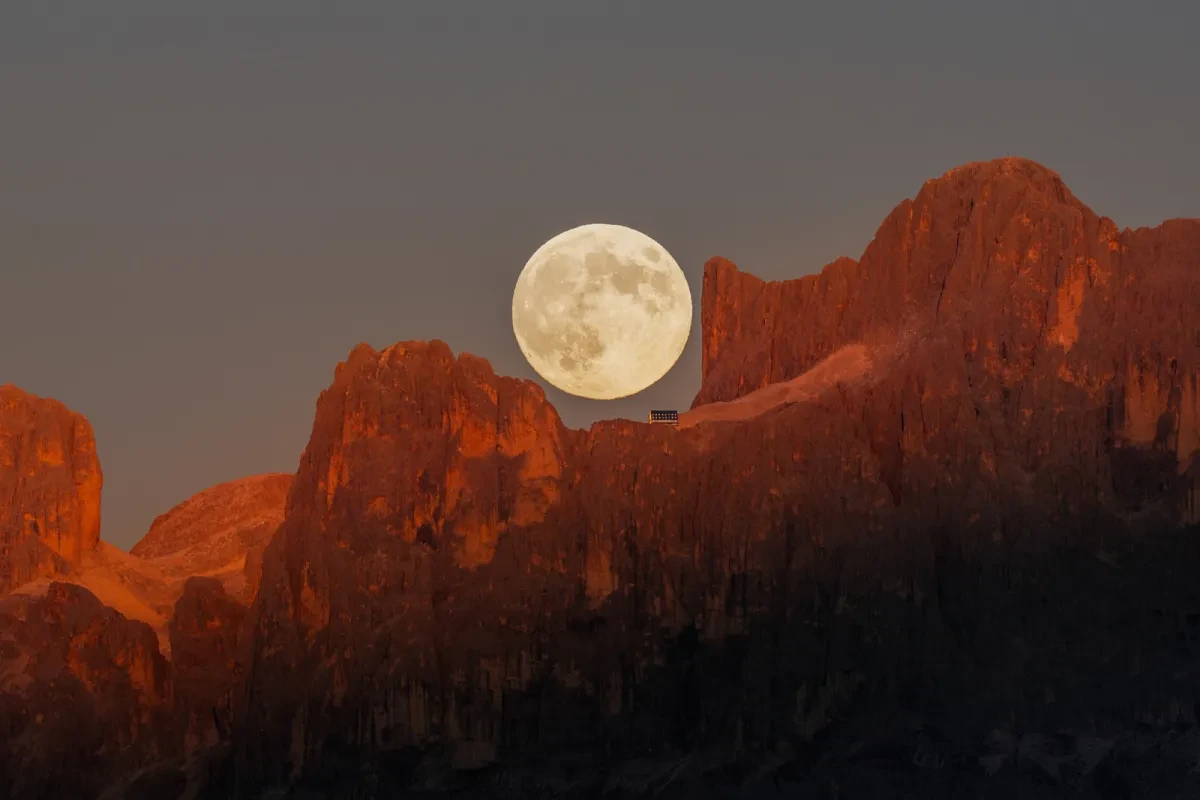
Moonrise Perfection Over the Dolomites by Fabian Dalpiaz
Santuario di Pietralba, Deutschnofen, South Tyrol, Italy
The full Moon rises above the rugged peaks of the Dolomites. With no clouds in sight and in flawless conditions, the golden light of sunset bathes the mountains, creating harmony between Earth and sky.
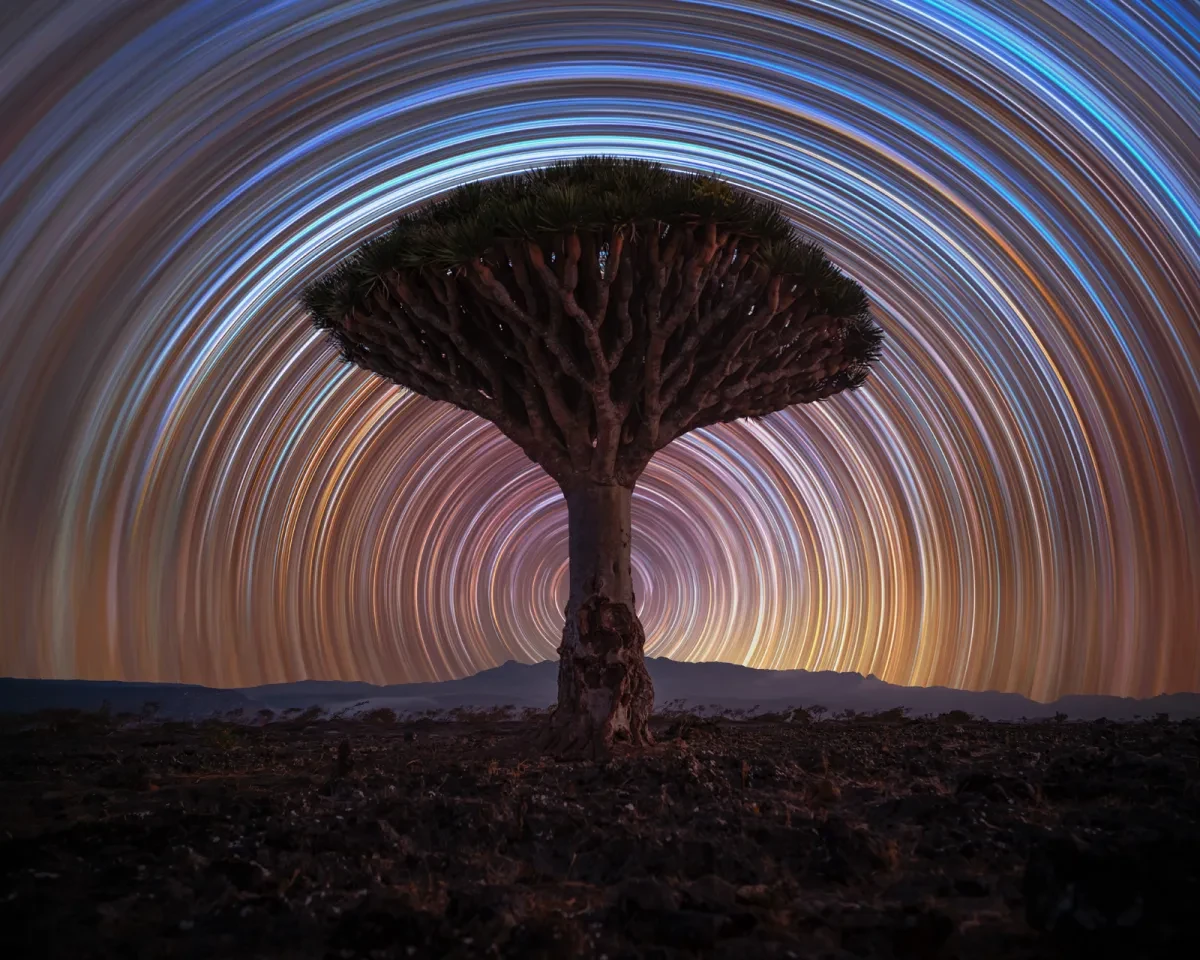
Dragon Tree Trails by Benjamin Barakat
Firmihin Forest, Hidaybu District, Yemen
A solitary dragon tree stands tall in the heart of Socotra’s Dragon Blood Tree forest – an otherworldly landscape unlike anywhere else on Earth. The final image is composed of 300 individual exposures.

Total Solar Eclipse by Louis Egan
Shortlisted in ZWO Young Astronomy Photographer of the Year. Coaticook, Quebec, Canada
This 22-megapixel panorama shows the different stages of the full solar eclipse, with a high dynamic range (HDR) image of totality in the middle. This reveals both the bright corona and finer details otherwise lost in standard exposures. The final image uses approximately 200 images with varying exposure times to create a HDR totality, before combining everything together.
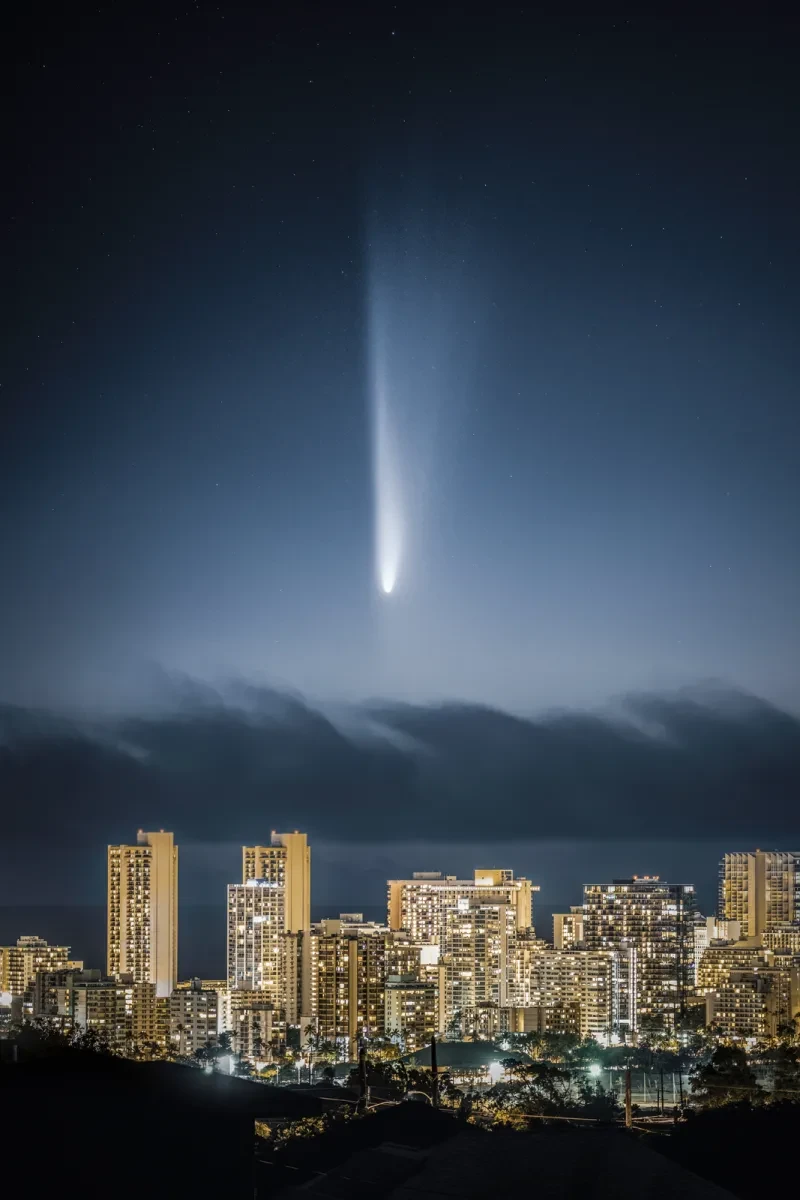
Comet Over Waikiki by Ran Shen
Honolulu, Hawaii, USA
Taken on the evening of 12 October 2024 at Pu'u O Kaimukī Park, Ran Shen joined many residents and astrophotographers in Honolulu, Hawaii, to witness the passage of Comet C/2023 A3 (Tsuchinshan-ATLAS), one of the most anticipated astronomical events of the year.
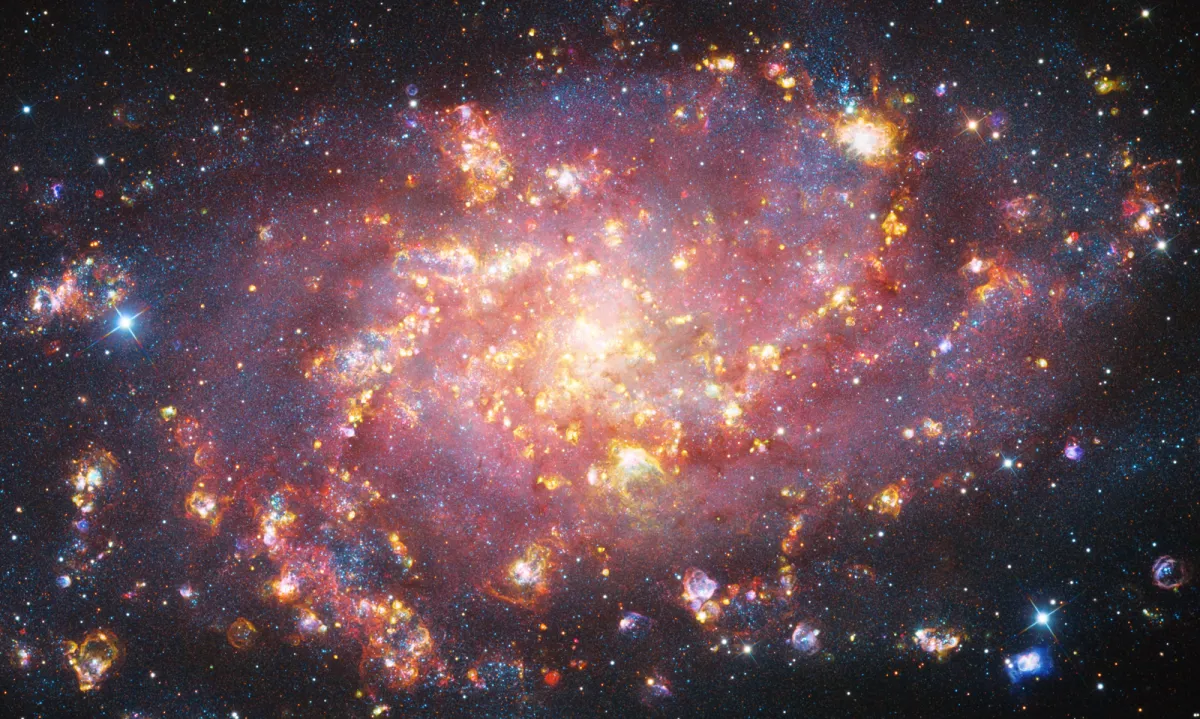
Fireworks by Bence Tóth, Péter Feltóti and Bertalan Kecskés
Sződliget, Pest and Törökkoppány, Somogy, Hungary
The image shows M33, the Triangulum Galaxy, from a new perspective. Due to tidal interaction with M31, there is very prominent star-forming activity in M33, which results in a spectacular structure of emission nebulae. During processing, a separate SHO picture was created with a strong SII/H-alpha presence, the glowing red structures in the picture, and blended with a high-resolution LRGB processing of the continuum data, representing the ‘background’ light.
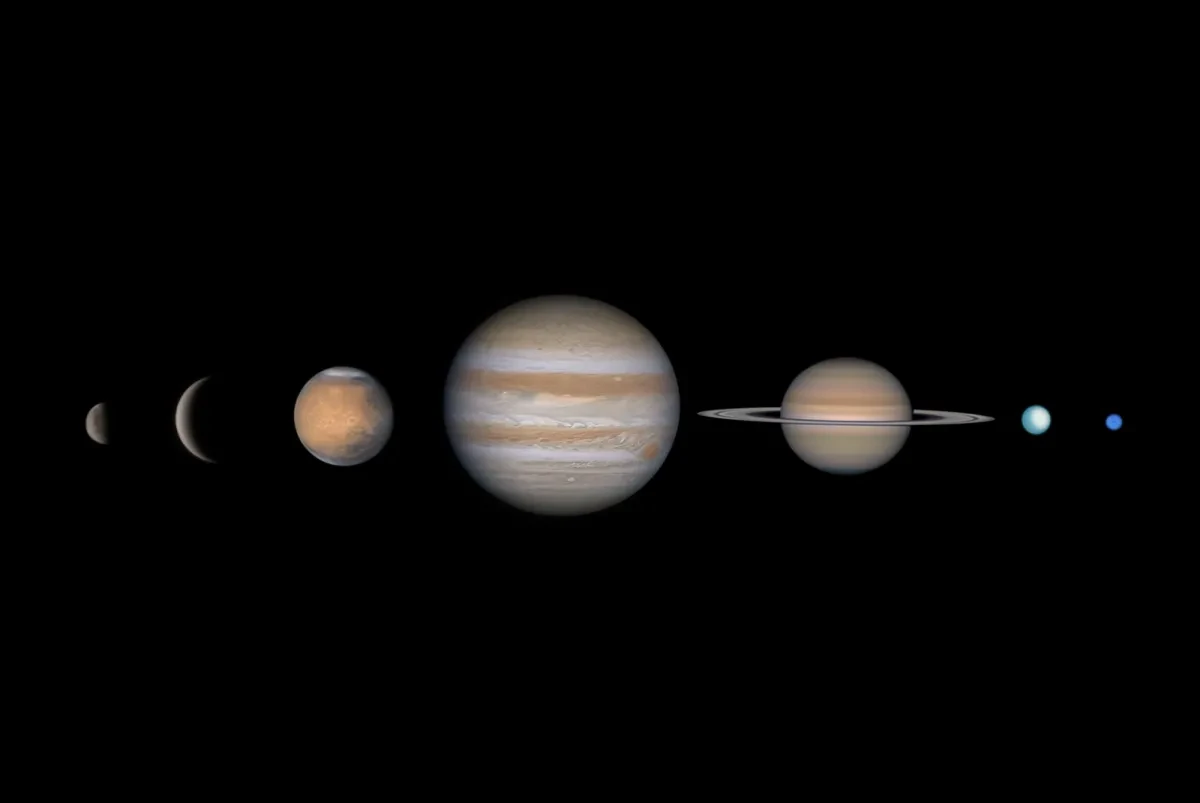
Solar System Portrait by Sophie Paulin
Bobingen, Bavaria, Germany
This image presents all the planets of our Solar System, excluding Earth, showcasing their unique characteristics. Mercury, the closest to the Sun, is a barren, cratered world, while Venus is shrouded in thick clouds. Mars, the Red Planet, has vast deserts and the largest volcano in the Solar System. The gas giants, Jupiter and Saturn, dominate with their immense size and swirling storms, while Saturn’s rings make it especially striking. Uranus and Neptune, the ice giants, are rich in methane, giving them their blue hue.
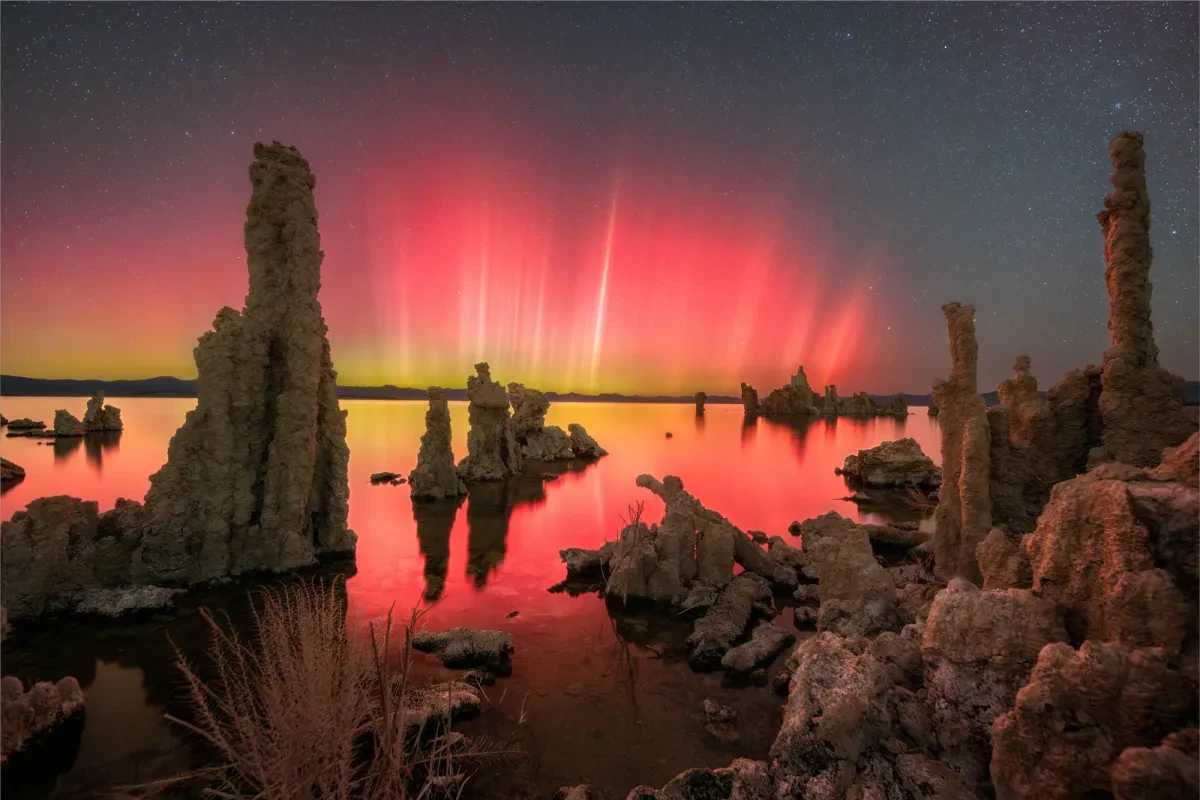
Aurora Over Mono Lake: A Rare Dance of Light by Daniel Zafra
Mono Lake, Mono County, USA
This photograph captures the rare occurrence of Northern Lights in California. Vibrant ribbons of magenta and green light up the sky, reflecting in the still waters among the rock formations.
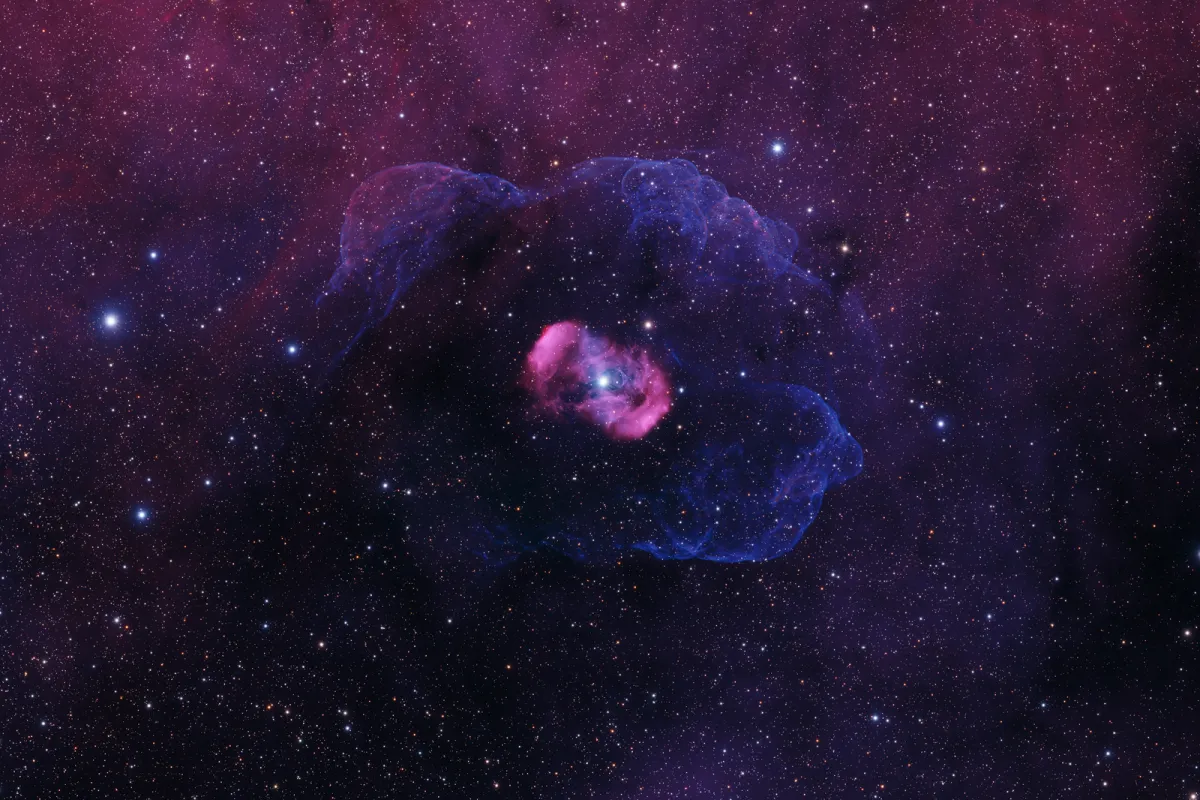
NGC 6164 and NGC 6165: The Dragon's Egg by Charles Pevsner
Deep Sky Chile Observatory, Camino del Observatorio, Río Hurtado, Chile
At the centre of this image is the bright star HD148937, part of a luminous triple-star system at the centre of the Dragon’s Egg Nebula (NGC 6164 and 6165) that lights up the nebula structure. Charles Pevsner was originally attracted to this target because of the striking symmetry of the magenta lobes of the Dragon’s Egg, but his favourite element ended up being the wispy outer shell.
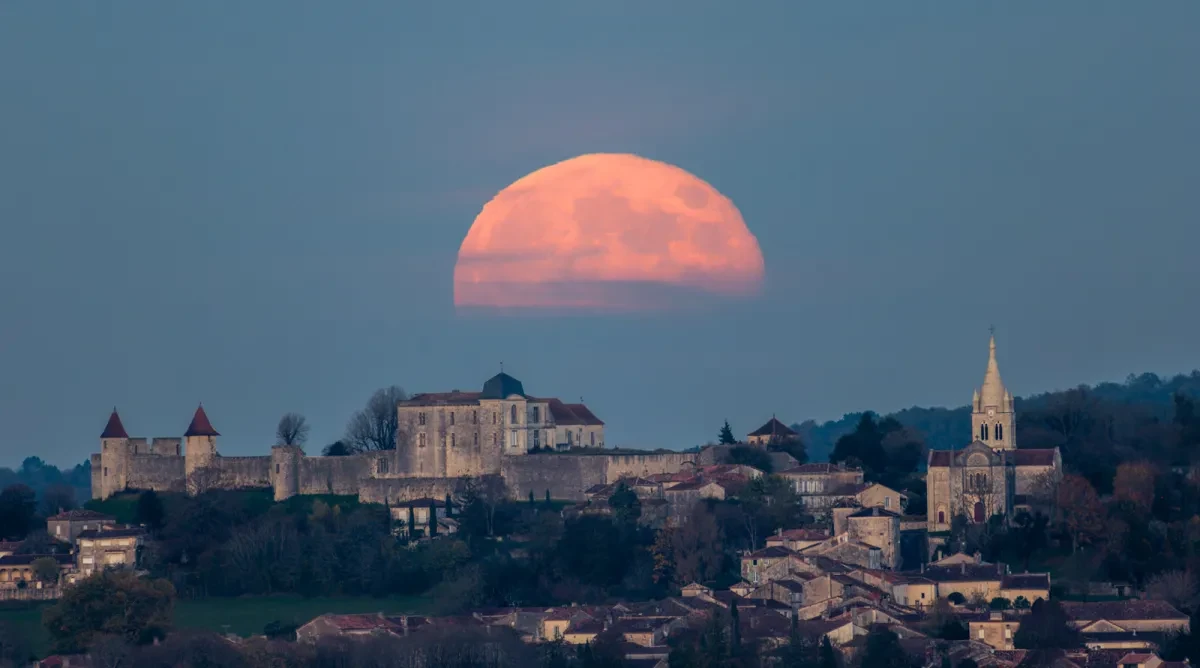
Moonrise Over Villebois-Lavalette by Flavien Beauvais
La Font Aride, Saint-Amant-de-Montmoreau, France
This unique photograph was taken 6.4 km (4 miles) from the château of Villebois-Lavalette, just north of Bordeaux. The distortions are related to the distance between the imaged Moon and the foreground but also with respect to the atmospheric disturbance, hence the curves on the surface of the Moon.
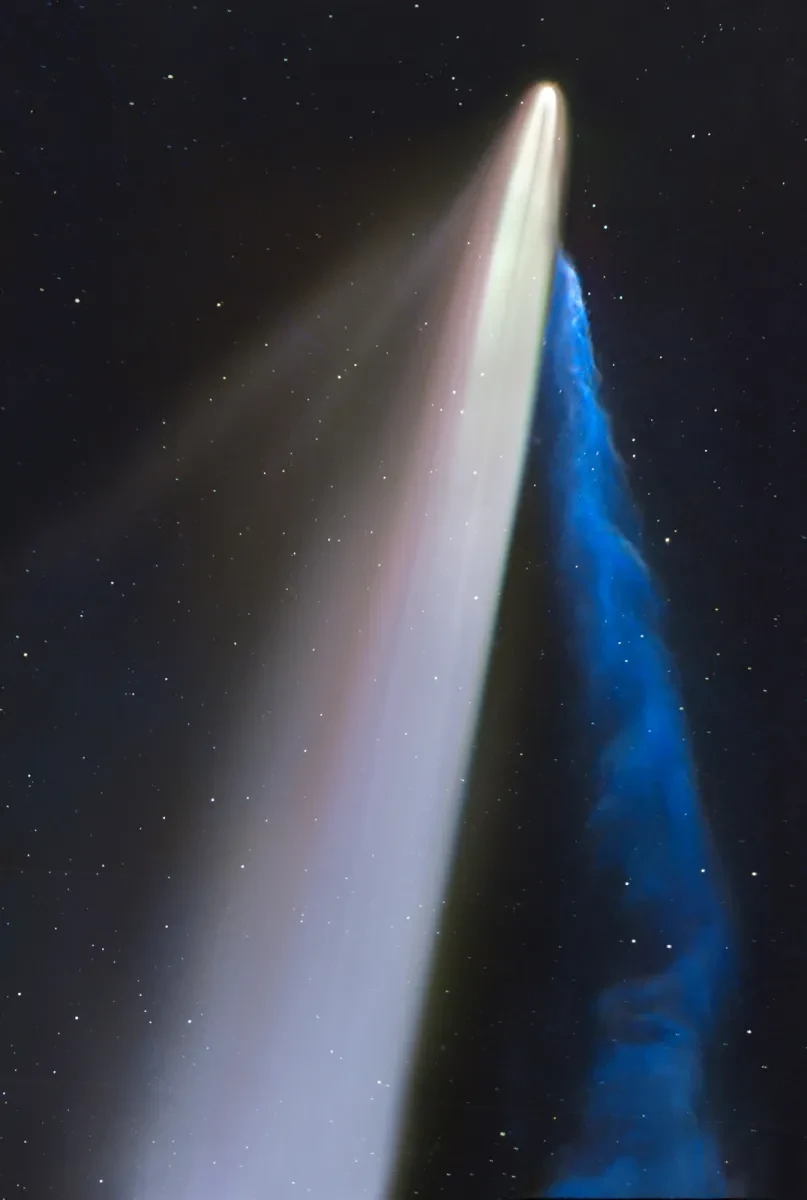
Close-up of a Comet by Gerald Rhemann and Michael Jäger
Tivoli Astrofarm, Windhoek Rural, Namibia
The photographers travelled to Namibia to view Comet C/2023 A3 (Tsuchinshan-ATLAS) in the southern hemisphere. Due to the angle of the observation, the dust and ion tails seem to have overlapped, but the impact of solar winds on the day caused noticeable kinks in the ion tail.
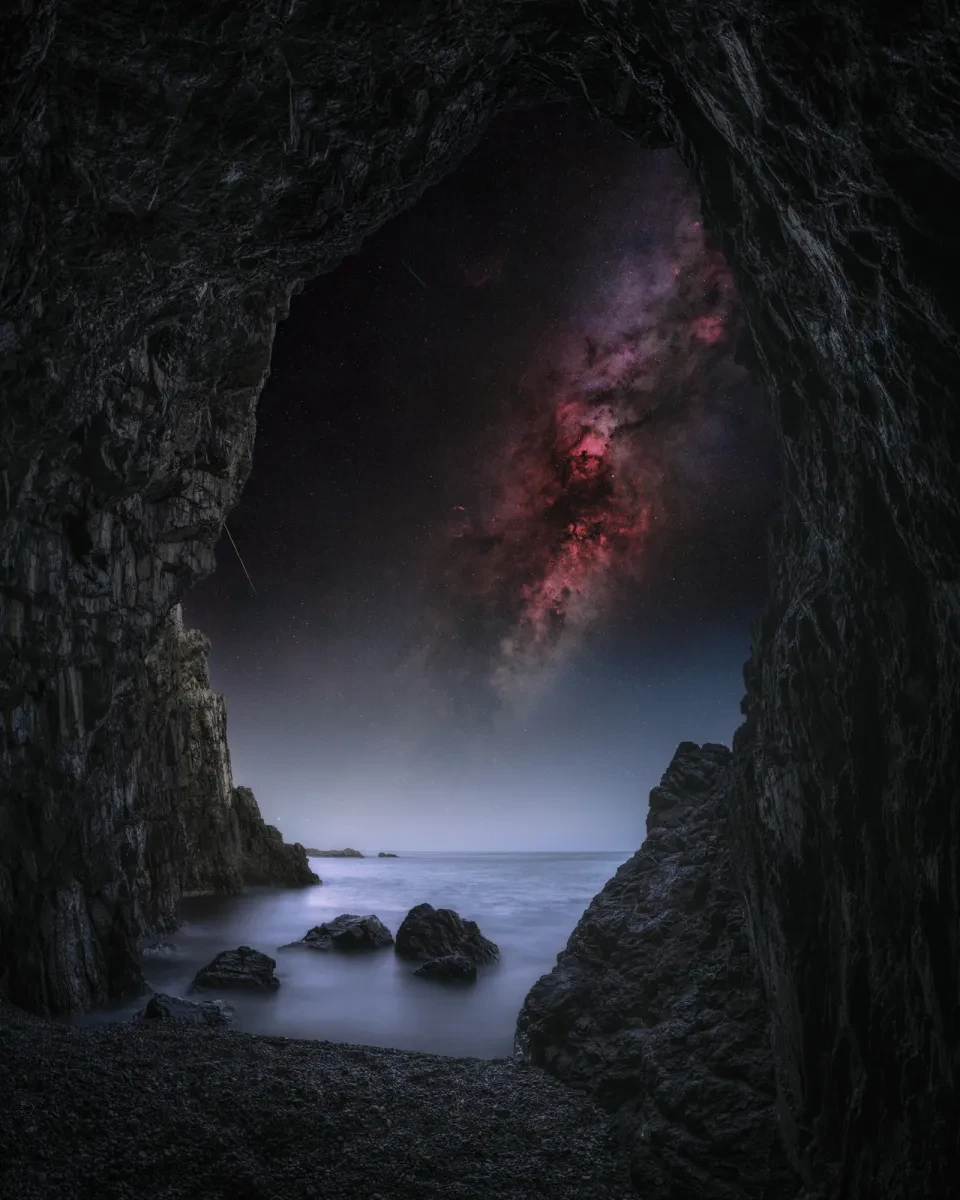
Cave of Stars by Yoshiki Abe
Nagato, Yamaguchi, Japan
Realising that it was possible to photograph the Milky Way from this remote cave, Yoshiki Abe waited for the perfect conditions to take the image. This is a composite photograph. Both parts were taken on the same night and at the same location, but the foreground was shot during the blue hour then the tripod was shifted to capture the Milky Way.
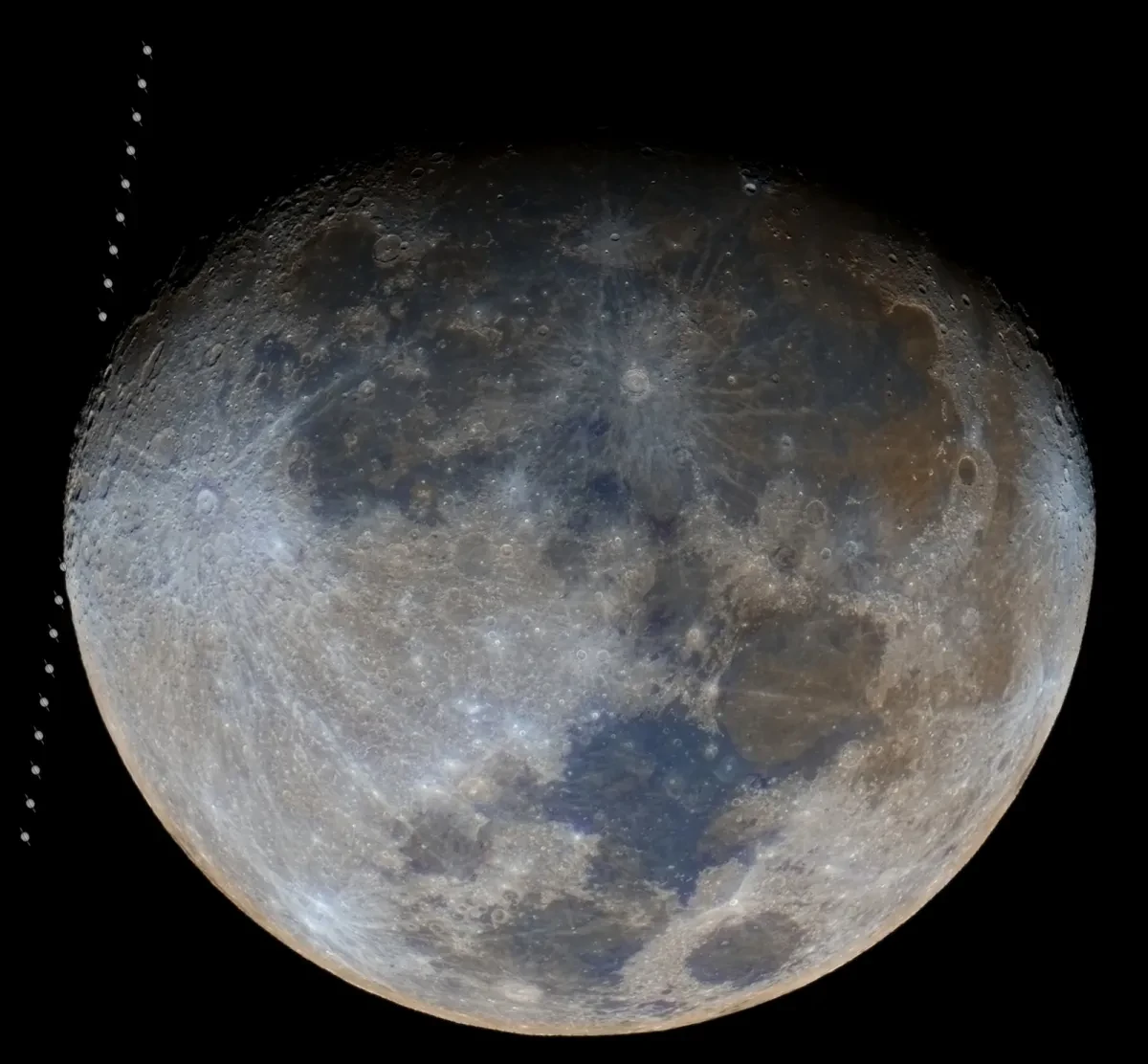
Lunar Occultation of Saturn by Chayaphon Phanitloet
Bua Yai, Bua Yai District, Nakhon Ratchasima, Thailand
This is a composite image that brings images of both the Moon and Saturn together to show the lunar occultation of Saturn. A lunar occultation of Saturn occurs when the Moon passes in front of Saturn, temporarily blocking its light from Earth. This event is brief and can be observed as the Moon obscures the planet.
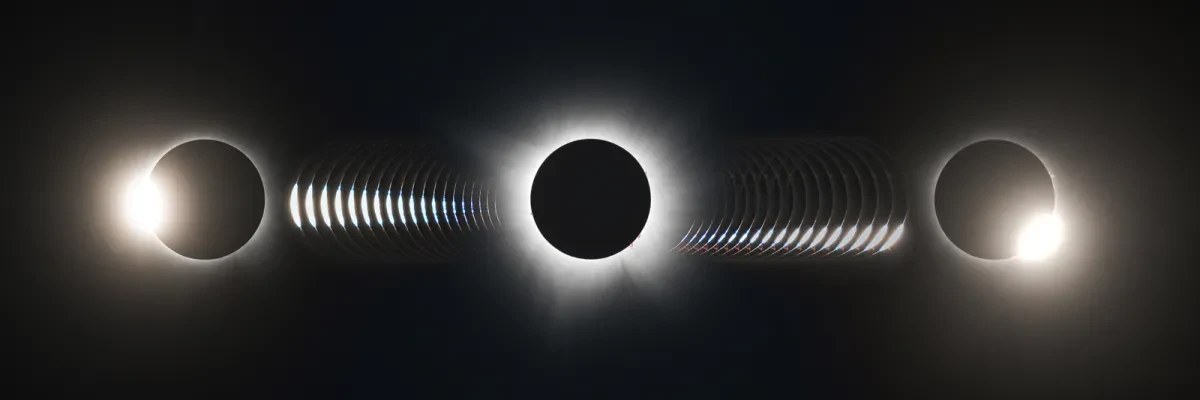
Progression of Baily's Beads by Damien Cannane
Dexter, Missouri, USA
Baily’s Beads are bright spots around the Moon during a solar eclipse that are caused by sunlight passing through lunar valleys. This composite shows the progression, from left to right, from the first ‘diamond ring’ – a moment when one last bright point of sunlight shines beside the faint corona, resembling a diamond on a ring – fading through Baily's Beads into totality and beyond until a 'diamond ring' occurs again as the Sun starts to reappear.
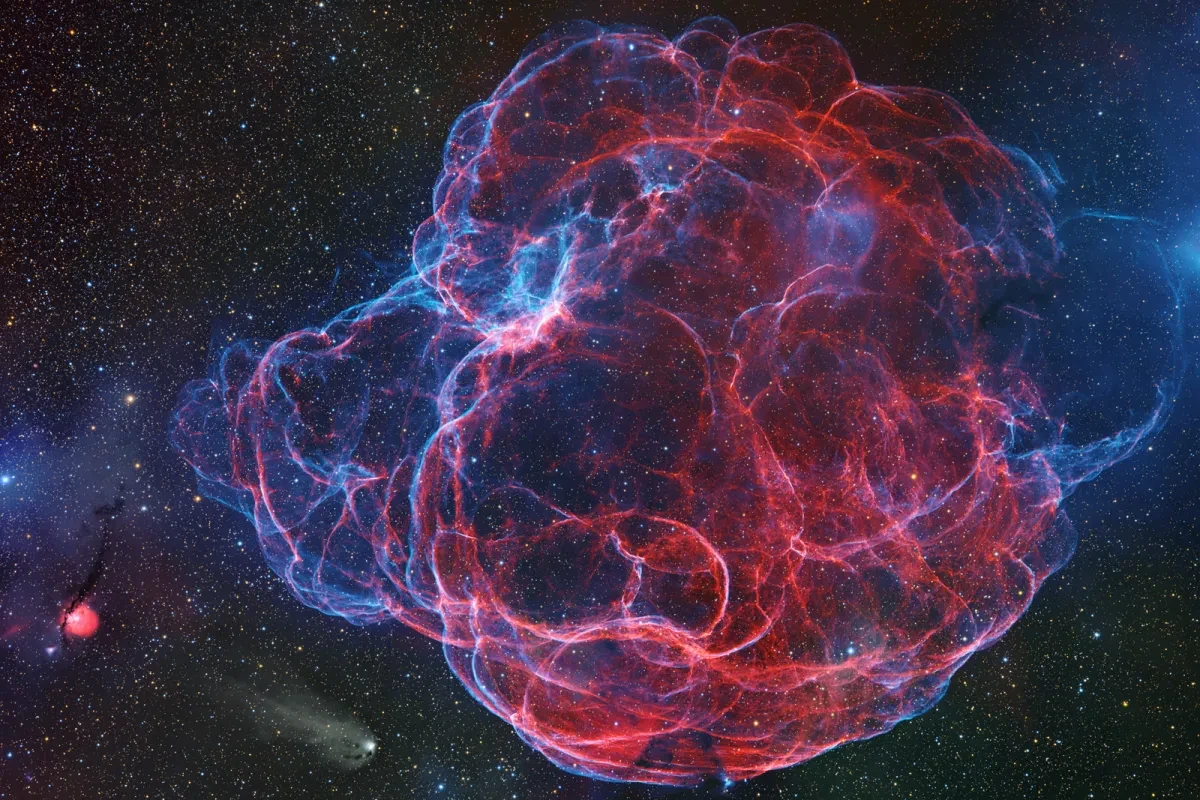
Electric Threads of the Lightning Spaghetti Nebula by Shaoyu Zhang
Deep Sky Chile Observatory, Río Hurtado, Chile and Xiangcheng, Garzê Tibetan Autonomous Prefecture, Sichuan, China
This full-spectrum image of the Spaghetti Nebula unveils the faint and elusive nature of this supernova remnant (SNR), hidden behind a vast cloud of dust that obstructs its emission light. To enhance its visual appeal, Shaoyu Zhang dedicated considerable time to capturing OIII data, intensifying the blue and green hues, while allowing SII and H-alpha to support high dynamic range stretching for added depth.
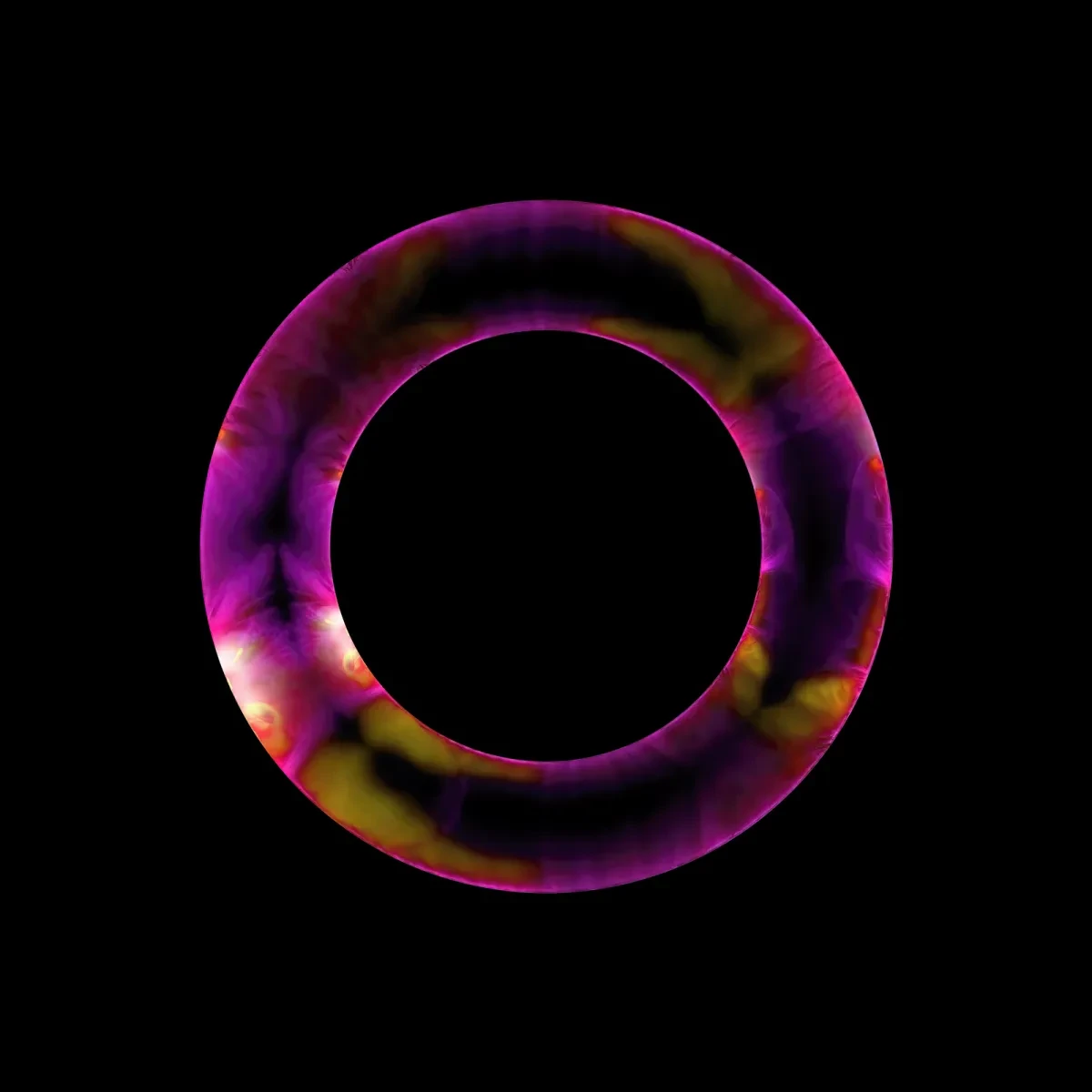
Neon Sun by Peter Ward
Shortlisted in the Annie Maunder Open Category. Original data from NASA SDO 171, 193, 304 nanometre from 1 June 2024
The data from NASA’s Solar Dynamics Observer (SDO) probe was used here to show the Sun’s inner corona in a way that hints at a process similar to that which energises colourful neon lights on Earth. Images taken by the SDO in the ultraviolet spectrum were remapped to a more vibrant palette, with the same coronal data turned ‘inside out’ to surround the Sun, creating the illusion of it being enclosed in a neon tube. The data was then polar inversed to mirror the inner coronal image and colour saturation was increased.
Read more
Explore the universe with Royal Observatory Greenwich astronomers and curators.
Sponsors and supporters


Header image: NGC 6164 and NGC 6165: The Dragon's Egg © Charles Pevsner

